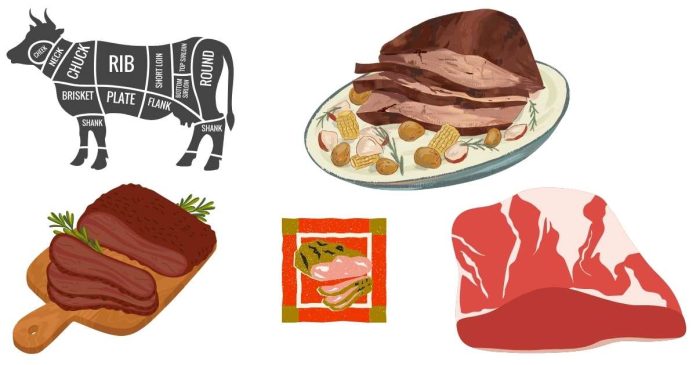Smoking a brisket is a labor of love, and for many barbecue enthusiasts, achieving the perfect balance of tenderness and flavor can feel like chasing the holy grail. One of the most debated topics among pitmasters is the ideal internal temperature to pull your brisket off the smoker: should it be 180°F or 205°F? Let’s break it down and settle the debate.
Why Temperature Matters in Brisket Smoking
Brisket is a notoriously tough cut of beef that comes from the pectoral muscles of the cow. To transform it into the melt-in-your-mouth delicacy we know and love, you need to break down the connective tissues and render the fat over hours of low-and-slow cooking.
The internal temperature of your brisket determines how much collagen has broken down into gelatin, which is key to tenderness. Pulling the brisket at the right temperature ensures it’s neither undercooked (and tough) nor overcooked (and dry).
180°F: The Case for a Lower Temperature
Some pitmasters advocate pulling the brisket off the smoker at 180°F, especially if their goal is a brisket with more structure and chew.
Pros:
- Firmer Texture: At 180°F, the brisket retains more of its natural firmness, which some people prefer for slicing.
- Shorter Cook Time: Reaching 180°F takes less time than going all the way to 205°F.
- Best for Certain Uses: If you’re planning to use the brisket for dishes like tacos or sandwiches, the slightly firmer texture can hold up better.
Cons:
- Incomplete Breakdown of Collagen: At 180°F, the connective tissues may not fully break down, leaving parts of the brisket tougher.
- Lack of Tenderness: You won’t get that “fall-apart” texture that many people associate with perfectly smoked brisket.
Ideal Use Case: Brisket cooked to 180°F can be a good choice for those who prioritize texture over tenderness or are short on cooking time.
205°F: The Gold Standard for Tenderness
Most pitmasters consider 205°F the target temperature for smoked brisket. By this point, the connective tissues and collagen have completely broken down, leaving you with a brisket that’s tender and juicy.
Pros:
- Ultimate Tenderness: At 205°F, the brisket is at its peak tenderness, with connective tissues fully rendered into gelatin.
- Classic BBQ Style: If you’re aiming for competition-level brisket or the kind of brisket served in top BBQ joints, 205°F is the way to go.
- Perfect for Slicing or Pulling: Whether you slice it thin or shred it, brisket at 205°F is versatile for serving.
Cons:
- Longer Cook Time: Reaching 205°F can take hours longer, requiring patience and careful monitoring.
- Risk of Overcooking: If you let the brisket sit on the smoker too long after hitting 205°F, it can become mushy or dry, especially the leaner flat portion.
Ideal Use Case: Go for 205°F when you want a tender, juicy brisket that melts in your mouth.
Is 195°F the Sweet Spot?
Some pitmasters split the difference and target a range of 195°F–200°F. At this temperature, much of the collagen has broken down, but the brisket still retains some structure.
When to Consider 195°F:
- If you want tenderness without risking the meat becoming overly soft.
- For smaller briskets or flats, where overcooking is a greater risk.
Don’t Just Rely on Temperature: The Probe Test
While temperature is an important guideline, it’s not the only measure of when your brisket is done. The probe test is just as critical.
- Insert a skewer, toothpick, or thermometer probe into the thickest part of the brisket.
- If it slides in with little to no resistance (like butter), the brisket is ready.
- This tenderness test is the ultimate indicator, regardless of whether the internal temperature reads 195°F, 200°F, or 205°F.
The Importance of Resting
Once your brisket reaches its target temperature, resist the urge to slice it immediately. Resting allows the juices to redistribute throughout the meat, ensuring a moist and flavorful result.
- Wrap the brisket in butcher paper or foil.
- Let it rest in a cooler or warming oven for 1–2 hours.
- The internal temperature will continue to rise slightly (carryover cooking), so keep that in mind when deciding when to pull it from the smoker.
Other Factors to Consider
- Flat vs. Point: The flat portion of the brisket is leaner and more prone to drying out, so it may benefit from being pulled earlier. The fattier point can handle higher temperatures.
- Size of the Brisket: Larger briskets may take longer to cook and rest, so be patient.
- Smoker Temperature: Cooking at 225°F will result in a slower cook than at 250°F, which may impact when you pull the brisket.
The final internal temperature for brisket depends on your personal preferences and how you plan to serve it:
- Choose 180°F if you prefer a firmer texture or have limited time.
- Opt for 205°F if you want melt-in-your-mouth tenderness and are willing to wait.
Ultimately, the perfect brisket comes down to a combination of internal temperature, tenderness (via the probe test), and proper resting. So, fire up your smoker, experiment with different approaches, and find the temperature that delivers your ideal brisket!



